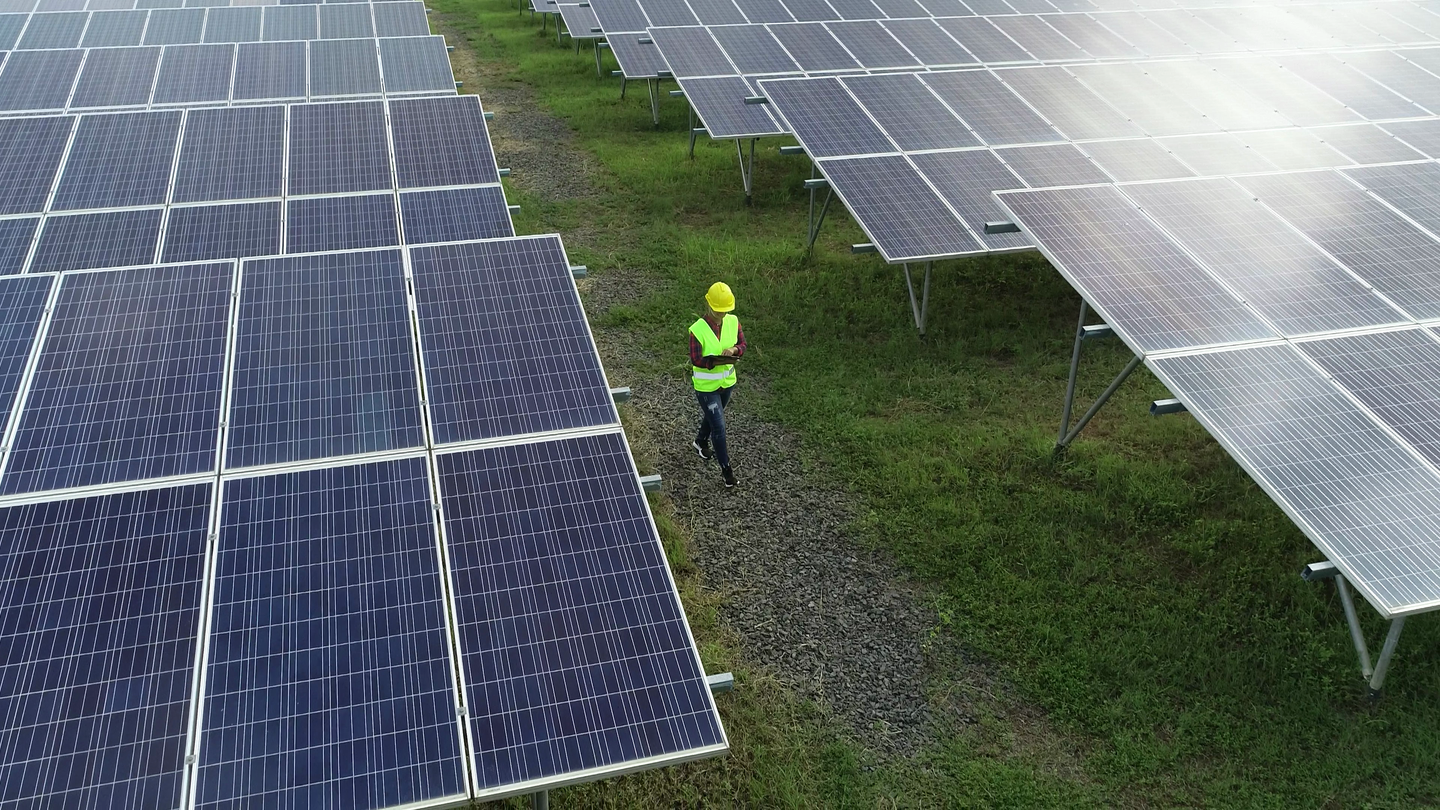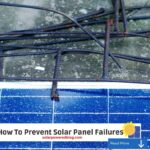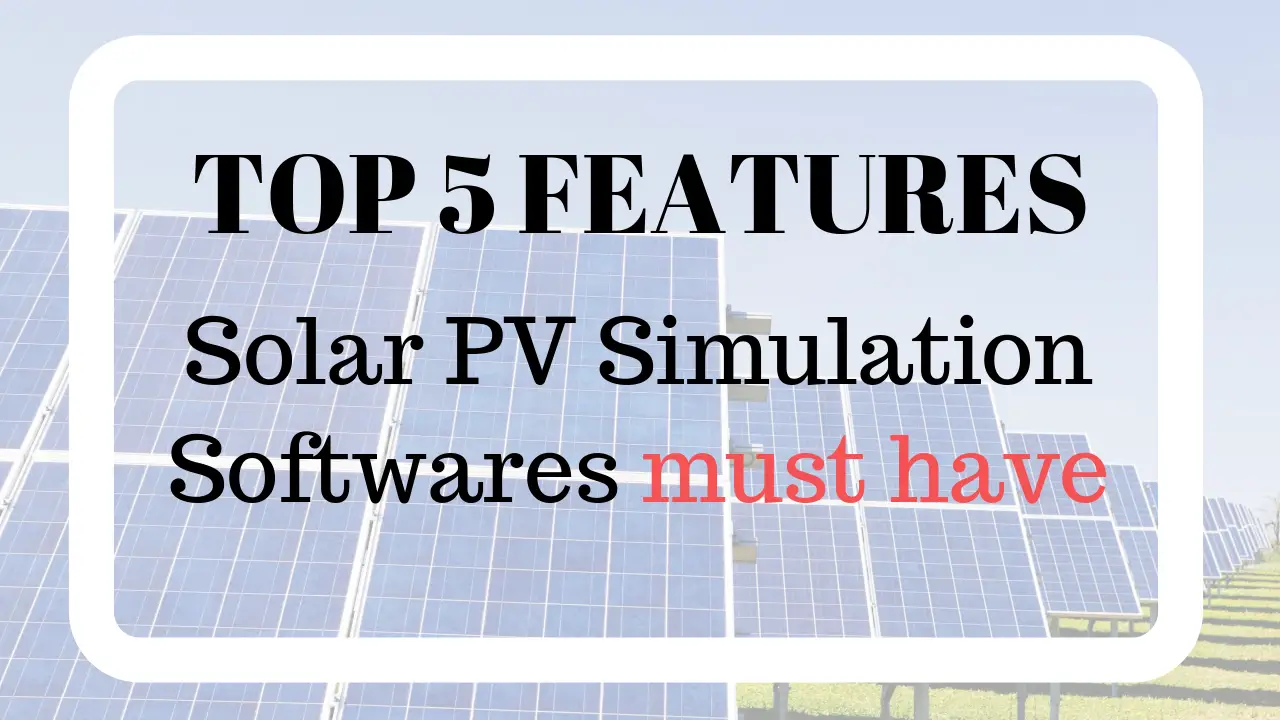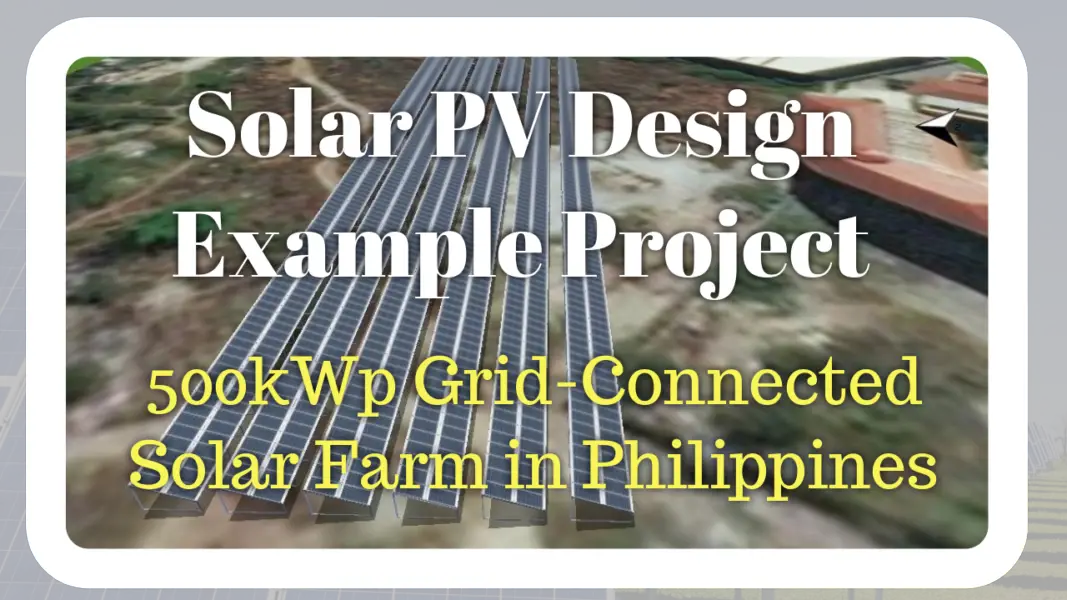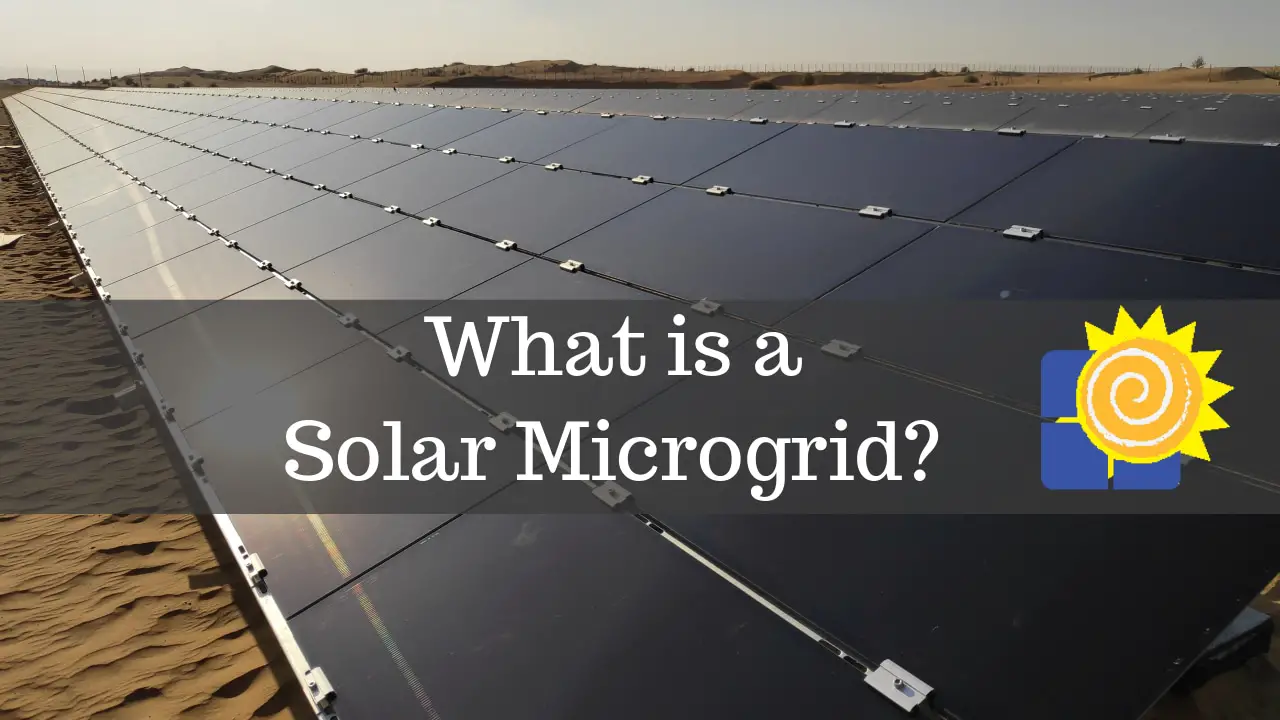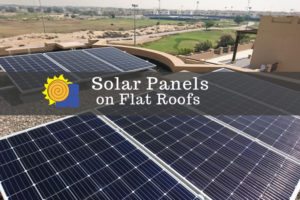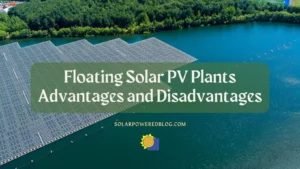Doing a site survey is an essential part of the successful implementation of any project, especially in the solar industry. This enables solar engineers, project managers, and surveyors to properly prepare and manage the design, plan, and estimation for the solar PV system.
By doing site surveys, the overall picture of the successful solar PV project becomes clearer. To have the best results for your solar power installations, know the best tips on how to do site surveys.
Step-by-Step Guide for a Solar Site Survey
The solar site survey involves several essential steps to ensure a successful installation of solar panels:
Step 1: Initial Assessment
The first step is to evaluate the property’s suitability for solar panel installation. Factors such as the roof’s orientation, shading from nearby objects, structural integrity, and available space will be considered.
Step 2: Energy Consumption Analysis:
An analysis of the property’s energy consumption patterns is conducted to determine the appropriate size and capacity of the solar panel system required to meet the energy needs.
Step 3: Design and Layout
Based on the assessment and energy analysis, a preliminary design and layout for the solar panel system are developed. This includes determining the optimal placement and positioning of the panels for maximum sunlight exposure.
Step 4: Electrical and Structural Inspection
A thorough inspection of the property’s electrical system and structural integrity is performed to ensure compatibility with the solar panel installation. This involves assessing the electrical wiring, load capacity, and roof structure.
Step 5: Shading Analysis
Accurate shading analysis is conducted to identify any potential obstructions, such as trees, neighboring buildings, or other structures that may cast shadows on the solar panels. Minimizing shading is crucial to maximize the system’s efficiency.
Step 6: Permit and Code Compliance
The survey ensures that the preliminary design complies with local regulations, building codes, and permit requirements. Any necessary adjustments or modifications are made to meet these standards.
Step 7: Financial Analysis
A financial analysis is conducted to evaluate the return on investment, payback period, and potential savings from installing the solar panel system. This helps the property owner make an informed decision regarding the investment.
Step 8: Report and Recommendations
Finally, a comprehensive report is prepared, summarizing the findings of the survey and providing recommendations for solar panel installation. This report serves as a guide for the subsequent steps in the installation process.
By following these steps, a solar site survey helps ensure a well-informed and efficient installation of solar panels, tailored to the specific property and energy requirements.
What is a solar PV site survey?
A solar site survey involves assessing a property before installing solar panels, usually conducted once a sale has been finalized. The primary purpose of conducting a site survey is to verify the viability of the initial design, ensuring the development of a plan that meets the requirements for obtaining necessary permits.
Site surveys for solar PV projects are inspections of the area where the installation of the solar panels and other equipment is proposed. The main goal of this activity is to gather all the necessary information for the effective implementation of the solar PV system.
If you want to be efficient in the project design and implementation, a proper solar site inspection is a must. This activity is a great help in preparing proper system designs, estimates, drawings, and other technical documents.
By the end of the solar site inspection, you should be able to determine the following:
- Site’s climatic conditions.
- The energy requirement of the property.
- Physical details of the property (including the roof).
- Best spot for installing PV arrays.
- Possible shading and other obstructions.
- Status of the property – ground or roof area.
- Size of the property’s main electrical services.
- Location of the electrical point of connections.
- Best spots for mounting electrical components
- Condition of roofing and structural support.
- Environmental factors.
- Current monthly kWh consumption.
Once you have these data, it will be easier for you to do an accurate solar PV simulation and design for the project.
Why is a site survey important?

Performing a site survey can help an organization, or individual, save valuable time, money, and resources. It reduces the wastage of materials in case you over-install a system. It usually means you have purchased more solar panels than what can fit on the roof.
By doing a site survey, you will become more accurate in your list of materials needed. Aside from solar modules, you will also need to know the lengths and quantity of cables you need. After gathering all necessary data, you will then calculate for the voltage drop to properly size your solar cables.
Which Devices Are Useful for a Solar Site Survey?
If you don’t know what device you need to bring to make the solar site survey very productive, don’t worry because we got that covered. Here are the things that can be very helpful when doing the site visit for a potential solar PV system installation.
- Laser Measuring Tools
- Phone or camera
- Shade assessment device (Surveyor)
Making sure that you bring those important tools will ultimately help you in assessing the area for the solar power plant. It will save you time. It can also allow you to have the important details in creating the optimal design later.
So, let us now begin with the tips that can be helpful in making the most out of your site visit!
Tip #1: Create an initial PV system design.

For the past few years, this tip has been very helpful to many solar site surveyors. By creating a solar PV design, you will have an initial impression of where you want to inspect first on the site. If it’s possible, you can use Google Maps to see which areas are potentially viable for installing solar panels.
Then, you can use solar PV software to create an initial system design. In our previous posts, you can check the following solar PV design tools if you like.
Google Street View for the Initial Survey
Additional sub-tip: When doing the initial system design, you may also use Google Street View, especially, if the project is for a residential property. To do this, just head to Google Maps and enter the address of the house or building. Click and drag the “little human” icon from the bottom left corner into the streets you want to explore as seen in the image below. You may use your computer or phone when doing this.

Using this technique, you will be able to create your initial solar PV design easily. This will allow you to know more details of the property like the type of roof, tree shading, height of the building, and others.
However, not all places have access to Google Street View. So, if the site is not on Google Maps yet, it’s still fine as you will diligently do the site survey by applying the other tips below.
Tip #2: Create a checklist before the site survey.
It is crucial to be prepared before going to a site survey. Make sure you create a list of the important things you want to know when doing the inspection, or the things you need to prepare for this activity.
Sample Site Survey Checklist
Here’s an example list of things you need to prepare before the on-site visit:
- Business cards
- Measuring tape
- Pen
- Clipboard
- Phone or camera
- Shade assessment tool
- Ladder
- Appropriate PPE (personal protective equipment)
- Brochure
- Sample data sheets
- Warranty information for proposed components
- Domestic content information
General Details
| Sales/dealer name: | Referral Source: | Date: |
| Client full name: | Email: | Phone #: |
| Secondary contact person: | Email: | Phone #: |
| Address: | Postal Code: | City: |
| What are the clientʼs motivations for wanting solar? Explain: | ||
| Types of solutions interested in: check all that apply: ☐ PV MicroFiT/FiT ☐ PV Net-metering ☐ PV Off-grid ☐ Solar hot-water ☐ Solar air-heating ☐ Passive Solar/green building ☐ Solar products ☐ Consultation | ||
| Electric Company: | Account #: | |||
| Full Name(s) on account: | ||||
| Address (if different from above) | ||||
| Service: Amps: ☐ 100A ☐ 200A ☐ Other | Voltage: ☐ 240V ☐ 208 | Phase: ☐ Single ☐ Three | ||
| Available breaker space (for net-metering): ☐ Yes, how many? ☐ No | ||||
| Service entrance: ☐ Underground ☐ Overhead | ||||
| Type of solar PV installation: ☐ Tilted/slanted roof ☐ Wall/facade ☐ Awning ☐ Carport/parking structure ☐ Flat roof ☐ Ground-mount | ||||
| ☐ Single Story ☐ Double Story ☐ Other | Est. roof sq./ft | |||
| Roof Type: ☐ Asphalt ☐ Standing seam metal ☐ Clay tile (S pattern) ☐ Flat tile ☐ Flat roof ☐ Other | ||||
| Roof age: years | Roof condition: ☐ Excellent ☐ Fair ☐ Replace 3-5 years ☐ Replace immediately | |||
| Rafter Size: ☐ 2” x 4” ☐ 2” x 6” ☐ 2” x 8” ☐ 2” x 10” ☐ Other | ||||
| Rafter Spacing: ☐ 12” ☐ 16” ☐ 18” ☐ 20” ☐ Other | ||||
Solar PV Array Details
| Shade analysis performed: Perform shading analysis for each array using Solmetric, Suneye or Solar Pathfinder | ☐ Yes ☐ No | |||||||
| Length of wire-run from each array to proposed location of disconnect: | ||||||||
| Photos: ☐ Front of building ☐ Roof or array location ☐ Meter close-up (specs) ☐ Proposed disconnect location ☐ South side of house (from S looking N) ☐ South yard (From N looking S) ☐ Electrical panel location (net- metering) ☐ Electrical panel circuit breakers (net-metering) ☐ Roof pitch (get profile for pitch angle) ☐ Proposed inverter and battery bank location(s) (for off-grid only) ☐ Proposed efficiency upgrade location(s) ☐ Potential problems | ||||||||
| Ground-mount specifics: Type of site/soil: ☐ Landfill ☐ Agricultural land ☐ Sandy ☐ Marsh ☐ Cement ☐ Clay/loam ☐ Rocky/boulders | ||||||||
| Level, graded surface? ☐ Yes ☐ No | ||||||||
| Water near surface? ☐ Yes ☐ No ☐ Unknown | Corrosive soil? ☐ Yes ☐ No ☐ Unknown | |||||||
You can download the PDF format of this form from this link.
Once the activity is finished, you can look back on this list and see if all the points are clarified.
Tip #3: Prepare the proper measuring tools.
Of course, this is a must when doing a solar PV site survey. Preparing the appropriate tools for measuring the area will ensure that the available space is enough for the solar panels. It also enables you to take the height of parapet walls or other objects that may cast shadows on the modules.
List of measuring tools you might need:
- Tape Measure.
- Laser Distance Meters.
- Open-reel Fiberglass Tape.
- Measuring Wheels.
Tip #4: Ensure to inform the right people before the visit.
This tip is also very important. To be able to save time and energy, make sure that you have proper communication with the right people who are in charge of the place of visit.
This will ensure that they know when and why you are visiting the place. It will also help them prepare any personnel or access requirements to make the site survey smooth.
Tip #5: Make sure the right people attend.
Before going for the site survey, make sure that the right people will also be attending. This will allow you to properly enter the property, whether it be a residential, commercial, or industrial PV project.
It allows you to inform them about the areas you want to check like the roof, electrical rooms, etc. This way, they will be able to guide and help you get all the details you need for the solar PV project.
Tip #6: Take a lot of pictures.
It is, of course, very important that you bring a proper device to take pictures of the site. You may use whatever device is available to you as long as you can get clear images. Most of the time, solar engineers will use their smartphones for this task, which is also very effective and economical.
Here are some of the important things you need to take a picture of when doing site surveys:
- Areas where solar modules will be installed.
- Potential routes for AC and DC cables.
- Location of the potential source of shadows like parapet walls, AC units, trees, plants, etc.
- Electrical rooms.
- Single line diagrams (if available inside the electrical room).
- Electrical load schedules or load lists (if available inside the electrical room).
- Main electrical distribution board.
- Breakers inside the MDBs/SMDBs/LV Panels.
- Potential space/areas for inverters.
- Maintenance paths.
Tip #7: Take videos for documentation.
Usually, taking pictures is not enough when doing a solar PV site survey. That is why recording videos of the site will be greatly helpful for you.
Once you sit down in the office and start creating drawings and designs for the PV project, you will realize you might have missed some spots on the site. That’s the time you will revisit your video documentation and find the answer.
This tip has personally helped me avoid a lot of mistakes in the designing stage of a solar PV project. Just reviewing the videos will remind you of the things that are to be considered in your PV plant design. From roof skylights, AC units, or even the type of roofing materials, these are the things easily ignored when you don’t do video recording.
Another tip alongside this is to record your voice while taking videos, explaining what the particular video is all about. This is very effective especially when you are recording inside the electrical room where the point of connection is. In your video, make sure you are explaining helpful details with regards to installing the solar PV plant.
You may use your smartphone, go pro, or a handheld camera for this task. As long as you are comfortable with the device and it works well with you. Exploring the option of using 360-degree cameras is also an excellent choice.
Using this tip, you will be able to also share the videos you took with your colleagues for proper coordination. In effect, your team will also be familiar with the project even if they haven’t done the site visit themselves.
Tip #8: Get the existing electrical load details.

When doing the site survey, it is a must to get the details of the existing electrical load for your PV project. By doing this, you will be able to properly size the solar plant. This will give you an idea of the maximum capacity of the PV power that you will integrate with the property’s mains.
It will be shown as a single-line diagram. Sometimes, you will also see it in a table form which they call load schedule. You will usually see these on the walls of the electrical room, or the document holder on the backside of panel doors.
Tip #9: Check the connection points.
A connection point referred to here is the electrical panel where you want to connect your solar PV output. For residential buildings, it is usually the main electrical distribution board that is used as a point of connection.
However, you will need to check the main electrical rooms for bigger projects where LV panels are located. It usually has bigger breakers that are inside the huge electrical cabinets.
What you need to check is the availability of a spare breaker or space where you can fix your main solar PV breaker. This is important as this will let you know how easy or complicated it will be to connect your solar PV system into the building.
The easiest scenario is when the building has a spare breaker which you can use as a point of connection. It means you will just be pulling the main cables from the solar PV AC combiner box to the LV panel. Then, terminate the cables and you are good to go.
On the other hand, the worst case will be when there is no space available for the new solar connection inside the LV panel. This time, you will be forced to make modifications to the main electrical panel. That means you have to consider the cost of modifying the point of connection.
Tip #10: Check the potential maintenance paths.
During the initial site visit, it will also be helpful to know the potential maintenance paths for the solar plant. A maintenance path is necessary when the panels need to be inspected. It will also be used by maintenance people to clean the solar modules.
It is a good practice to include the maintenance path in your solar PV design. This way, you will know the adjustments you need to make during the installation stage. By checking this point during the site survey, you will be sure that your design will be more accurate and precise.
Tip #11: Get the end user’s consumption details.
Ask for the property owner’s monthly bills. This will allow you to know how much solar energy will be needed to attain a certain level of savings every month.
Getting the kWh consumption of the building is also important when calculating the number of years for the system to pay itself. It allows you to calculate the trajectory of cost vs. savings when installing solar panels. By doing this, you can optimize the PV project and design what size of a system is best for the customer.
Extra tip: Stay hydrated!
When doing a site survey, it is highly likely you will be exposed to the heat of the sun. Especially, when the site is for a huge solar project, you might find yourself sweating while taking pictures or videos. That is why keeping yourself hydrated all the time is also important.
It is a good thing to bring a bottle of water with you while doing this activity. Most people ignore it and end up being so thirsty during the site visit or even worse. You need to drink some water from time to time and not let your body be dehydrated.
By doing this, you will be more focused on the things you need to check and will end up not missing any important points. So, stay hydrated!
Wrap up
For every solar project, doing a site survey is fundamental to its success. This avoids errors and mistakes that could be very costly. Thus, it is always good not to overlook this process in order to have favorable results on your solar PV installation.
Related Articles
- Solar Panels on Flat Roofs: 7 Things You Must Know
- Top 5 Differences Between On-Grid and Off-Grid Solar Systems
- How much does a 10kW solar power system cost?
If you want to learn more about solar power and other renewable energy sources, sign up for our email list now and be part of the Solar Powered Fam!



